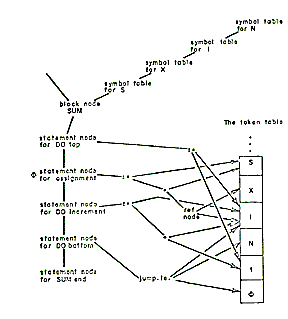
George Radin 1931-01-22 to 2013-05-21 - One of the principal developers of PL/I at IBM A procedural programming language introduced in 1964 by, development was started in the early 60's under the auspices of George Radin with the aim of making an updated version of that could better handle generic programming tasks, but in the end it was decided to implement a new language based on that would also incorporate features from and FORTRAN that were considered useful. Feeding Frenzy 4 Free Download Full Version. PL/I is a rather large language that had some design goals that might seem quaint by now such as 'you shouldn't have to learn all of PL/I to use it', but this actually a feature: The low level and systems language features of PL/I are separate parts of the language specification and you can use it as a generic application domain language without touching any of the low level constructs, while having the options to use them if need be. Another quirk is that it does not have any reserved words/commands, this is something it inherited from ALGOL and may be a reaction to but at the time PL/I was being developed that language was dominant and the list of reserved word you had to memorise was quite staggering, over 300 and growing with each new implementation, modern versions of COBOL have reduced that somewhat, this is similar to modern variants such as that can have over 1000 reserved words. The language is sometimes incorrectly known as PL/1, while the language is indeed named Programming Language One, the one was always meant to be expressed as a Roman numerical rather than an Arabian one, as is the tradition with computer languages even today. The Arabic 1 is only used on vintage computer and communications systems like USENET where the lower case only system or display limitation means that there is no Roman 'I' available.
Free-form key word based. User-defined syntax feature available. Syntax converter. Generates syntax necessary to populate dictionary with elements from copy libraries. Cobol, PL/I, Fortran, assembler precompilers capture information, provide program activity reports. Run Avi Mux Gui Download. Form that can be filled in in batch. PL/I to Cobol Conversions. Ispirer MnMTK automates the entire migration process COBOL to Oracle PL/SQL conversion. Moreover, choosing Ispirer MnMTK to convert COBOL you. In principle, Cobol conversion is a 'light' process. The Cobol Converter is designed to be run through the refine command. IT Conversion Systems - CSP and Visual. Age to Cobol. TSG Software migration CA-Telon Mantis DB2 Cobol. PL/I include files are converted to Cobol copybooks; Embedded SQL and command level CICS code is adjusted for. PL/I to Cobol Migration. Automatic conversion process on a program for program basis; All standard file types/databases supported; PL/I include files are converted to Cobol copybooks.
There are some variants of the language that are by now completely forgotten such as the safe variant SPL/I, that was designed at the behest of the USA Department of Defence in the early 1970's and was intended to be the language used for all non-business type programming done for the DoD but it end they gave up due to the variability of implementations and the difficulty of writing compilers and the DoD went with instead. Another variant was PL/C developed at Cornell University, it was designed for beginning programming students and the basic idea was that the compiler front end was smart enough to try and work out what the student meant rather than give just an error when he tried to compile. Since the background correction was silent, unless the compiler had to give up, you could easily end up with working programs that did something completely different than you intended to write.